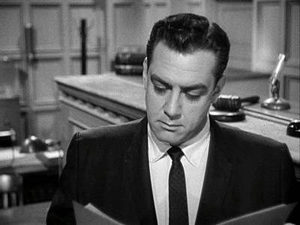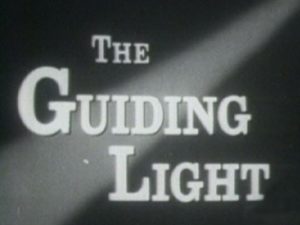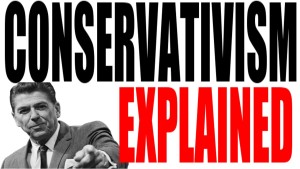 The unfortuante Noreen Johnson sought to recover from her insurer after her home suffered wind damage from Hurricane Isaac, and then caught fire roughly two years later. The insurer successfully defended against her claim based on her failure to cooperate as required by the policy. In addition to showing her failure to provide required information, the insurer was able to establish prejudice, in that (1) “by significantly altering the state of the house before GeoVera’s agent could appraise it, Johnson effectively negated GeoVera’s appraisal right, as GeoVera could no longer inspect the extent of the smoke damage,” and (2) “by refusing to sit for an examination under oath until over a year after the fire . . . [t]he delay caused Johnson to forget information vital to protect GeoVera from fraud during the claims process.” Johnson v. GeoVera Specialty Ins. Co., No. 15-30803 (Sept. 27, 2016, unpublished).
The unfortuante Noreen Johnson sought to recover from her insurer after her home suffered wind damage from Hurricane Isaac, and then caught fire roughly two years later. The insurer successfully defended against her claim based on her failure to cooperate as required by the policy. In addition to showing her failure to provide required information, the insurer was able to establish prejudice, in that (1) “by significantly altering the state of the house before GeoVera’s agent could appraise it, Johnson effectively negated GeoVera’s appraisal right, as GeoVera could no longer inspect the extent of the smoke damage,” and (2) “by refusing to sit for an examination under oath until over a year after the fire . . . [t]he delay caused Johnson to forget information vital to protect GeoVera from fraud during the claims process.” Johnson v. GeoVera Specialty Ins. Co., No. 15-30803 (Sept. 27, 2016, unpublished).
Monthly Archives: September 2016
 ERISA litigation about investment management presents a tension between the administrators’ fiduciary obligations, on the one hand, and discouraging needless litigation, on the other. After the Supreme Court’s most recent guidance about an ERISA fiduciary’s “duty of prudence” in Amgen Inc. v. Harris, 136 S. Ct. 758 (2016), the Fifth Circuit found that the plaintiffs in Whitley v. BP. PLC failed to meet their pleading burden: “The amended complaint states that BP’s stock was overvalued prior to the Deepwater Horizon explosion due to “numerous undisclosed safety breaches” known only to insiders. In other words, the stockholders theorize that BP stock was overpriced because BP had a greater risk exposure to potential accidents than was known to the market. Based on this fact alone, it does not seem reasonable to say that a prudent fiduciary at that time could not have concluded that (1) disclosure of such information to the public or (2) freezing trades of BP stock—both of which would likely lower the stock price—would do more harm than good. In fact, it seems that a prudent fiduciary could very easily conclude that such actions would do more harm than good.” No. 15-20282 (Sept. 26, 2016).
ERISA litigation about investment management presents a tension between the administrators’ fiduciary obligations, on the one hand, and discouraging needless litigation, on the other. After the Supreme Court’s most recent guidance about an ERISA fiduciary’s “duty of prudence” in Amgen Inc. v. Harris, 136 S. Ct. 758 (2016), the Fifth Circuit found that the plaintiffs in Whitley v. BP. PLC failed to meet their pleading burden: “The amended complaint states that BP’s stock was overvalued prior to the Deepwater Horizon explosion due to “numerous undisclosed safety breaches” known only to insiders. In other words, the stockholders theorize that BP stock was overpriced because BP had a greater risk exposure to potential accidents than was known to the market. Based on this fact alone, it does not seem reasonable to say that a prudent fiduciary at that time could not have concluded that (1) disclosure of such information to the public or (2) freezing trades of BP stock—both of which would likely lower the stock price—would do more harm than good. In fact, it seems that a prudent fiduciary could very easily conclude that such actions would do more harm than good.” No. 15-20282 (Sept. 26, 2016).
 The plaintiff in Cowart v. Erwin achieved the difficult result of winning a jury trial on an Eighth Amendment claim against a detention officer. The opinion details the proof that satisfied a sufficiency review — multiple favorable eyewitnesses (and multiple unfavorable ones as well) throughout the entire incident in question, along with helpful and contemporaneous photographs and medical records (among others). “Objective” video evidence was not dispositive when it “is not necessarily inconsistent with eye witness accounts of what transpired at the jail on the day in question.” No. 15-10404 (Sept. 20, 2016).
The plaintiff in Cowart v. Erwin achieved the difficult result of winning a jury trial on an Eighth Amendment claim against a detention officer. The opinion details the proof that satisfied a sufficiency review — multiple favorable eyewitnesses (and multiple unfavorable ones as well) throughout the entire incident in question, along with helpful and contemporaneous photographs and medical records (among others). “Objective” video evidence was not dispositive when it “is not necessarily inconsistent with eye witness accounts of what transpired at the jail on the day in question.” No. 15-10404 (Sept. 20, 2016).
 Graves v. Colvin provides an exceptionally clear illustration of harmless error:
Graves v. Colvin provides an exceptionally clear illustration of harmless error:
- Graves challenged the Social Security Administration’s determination that she was not disabled.
- A regulation governing ALJ hearings on such matters provides: “Occupational evidence provided by a VE or VS [vocational expert or vocational specialist] generally should be consistent with the occupational information supplied by the DOT [“Dictionary of Occupational Titles”] . . . At the hearings level, as part of the adjudicator’s duty to fully develop the record, the adjudicator will inquire, on the record, as to whether or not there is such consistency.”
- Graves lost, and argued in court that the ALJ failed to ask this required question.
- But — “‘Procedural perfection in administrative proceedings is not required’ as long as ‘the substantial rights of a party have not been affected.’ Graves does not even attempt to show that the vocational expert’s testimony was actually inconsistent with the DOT. Nor has she otherwise demonstrated prejudice. Hence, the ALJ’s procedural error was harmless and does not warrant reversal.”
No. 16-10340 (Sept. 21, 2016).
 Insurance coverage litigation provided another example of the tension between the “Scylla” of pleading — the “plead more detail” command from Twombly and Iqbal — and its “Charybids” — the principle of insurance law that “[a]ll doubts regarding the duty to defend are resolved in favor of the insured.” Fed Ins. Co. v. Northfield Ins. Co., No. 14-20633 (Sept. 16, 2016). Here, ltigation about pollution liability led to a dispute about whether a “pollution exclusion” eliminated the duty to defend. The Fifth Circuit reversed a summary judgment in favor of the insurer, noting: “ExxonMobil’s petition does not attach any of the petitions in the Louisiana Litigation. ExxonMobil’s petition provides very little information about the nature of the claims made in the Louisiana Litigation, for which ExxonMobil seeks indemnity and defense costs from [the insured].” As a result, “because of the breadth and generality of the allegations in ExxonMobil’s state court petition, we cannot say that all of the claims fall clearly within the exclusion.”
Insurance coverage litigation provided another example of the tension between the “Scylla” of pleading — the “plead more detail” command from Twombly and Iqbal — and its “Charybids” — the principle of insurance law that “[a]ll doubts regarding the duty to defend are resolved in favor of the insured.” Fed Ins. Co. v. Northfield Ins. Co., No. 14-20633 (Sept. 16, 2016). Here, ltigation about pollution liability led to a dispute about whether a “pollution exclusion” eliminated the duty to defend. The Fifth Circuit reversed a summary judgment in favor of the insurer, noting: “ExxonMobil’s petition does not attach any of the petitions in the Louisiana Litigation. ExxonMobil’s petition provides very little information about the nature of the claims made in the Louisiana Litigation, for which ExxonMobil seeks indemnity and defense costs from [the insured].” As a result, “because of the breadth and generality of the allegations in ExxonMobil’s state court petition, we cannot say that all of the claims fall clearly within the exclusion.”
 What better way to celebrate 600Camp.com’s fifth birthday than with Emeril’s muffaletta recipe? Thanks to all blog readers for years of support and encouragement.
What better way to celebrate 600Camp.com’s fifth birthday than with Emeril’s muffaletta recipe? Thanks to all blog readers for years of support and encouragement.
 The plaintiff in GlobeRanger Corp. v. Software AG won a $15 million judgment for misappropriation of trade secrets. The Fifth Circuit affirmed, holding:
The plaintiff in GlobeRanger Corp. v. Software AG won a $15 million judgment for misappropriation of trade secrets. The Fifth Circuit affirmed, holding:
- After a thorough review of Circuit precedent – not all entirely consistent – “that GlobeRanger’s trade secret misappropriation claim requires establishing an additional element than what is required to make out a copyright violation: that the protected information was taken via improper means or breach of a confidential relationship. Because the state tort provides substantially different protection than copyright law, it is not preempted.”
- Recognizing the “jurisdictional Catch-22” created by that ruling, and referring back to an earlier panel opinion from the time of the case’s removal: “As the complaint [then] alleged only conversion of intangible property for which there is equivalency between the rights protected under that state tort and federal copyright law, complete preemption converted the conversion claim into one brought under the Copyright Act that supported federal question jurisdiction at the time of removal and supplemental jurisdiction after it was dismissed.”
- Found that GlobeRanger had offered sufficient evidence of: (1) what specifically constituted its claimed trade secrets; (2) whether Software AG acquired trade secrets improperly or with notice of impropriety, particularly in light of federal contracting regulations; and (3) whether Software AG “used” any trade secret.
The opinion concluded with an unfortunately apt observation about the business litigation that is the focus of this blog: “This case demonstrates the unfortunate complexity of much of modern civil litigation. A trial involving a single cause of action—misappropriation of trade secrets (plus a derivate conspiracy claim)—has resulted in an appeal raising numerous issues that span the lifecycle of the lawsuit: jurisdiction; preemption; federal contracting regulations; expert testimony on damages; and jury instructions.
 In response to a summary judgment motion in a suit for unpaid overtime, plaintiff Garcia offered affidavit testimony that he “was told” certain favorable salary information. The record was unclear as to who told him that information. On appeal from an adverse ruling, the Court noted: “Garcia first argues that the district court erred by discounting, as hearsay, Garcia’s statement in his affidavit about what he was ‘told,’ because ‘taking the evidence in the light most favorable to Garcia, a party-opponent told Garcia this information.’ However, courts are not required to view evidence presented at summary judgment in the light most favorable to the nonmoving party on the question of admissibility; rather, ‘the content of summary judgment evidence must be generally admissible,’ and ‘[i]t is black-letter law that hearsay evidence cannot be considered on summary judgment’ for the truth of the matter asserted.” Garcia v. U Pull It Auto Truck Salvage, Inc., No. 16-20257 (Sept. 15, 2016, unpublished).
In response to a summary judgment motion in a suit for unpaid overtime, plaintiff Garcia offered affidavit testimony that he “was told” certain favorable salary information. The record was unclear as to who told him that information. On appeal from an adverse ruling, the Court noted: “Garcia first argues that the district court erred by discounting, as hearsay, Garcia’s statement in his affidavit about what he was ‘told,’ because ‘taking the evidence in the light most favorable to Garcia, a party-opponent told Garcia this information.’ However, courts are not required to view evidence presented at summary judgment in the light most favorable to the nonmoving party on the question of admissibility; rather, ‘the content of summary judgment evidence must be generally admissible,’ and ‘[i]t is black-letter law that hearsay evidence cannot be considered on summary judgment’ for the truth of the matter asserted.” Garcia v. U Pull It Auto Truck Salvage, Inc., No. 16-20257 (Sept. 15, 2016, unpublished).
 In Smith Group JJR, PLLC v. Forrest General Hospital, a dispute about an architect’s fee, the appellant argued that “the district court erred by considering extrinsic evidence bearing on the meaning of the term ‘actual contstruction cost’ in the parties’ agreement. This issue – the proper role of extrinsic evidence in determining the meaning of a contract, produces frequent litigation and frequent differences of opinion between district courts and the Fifth Circuit. Here, the
In Smith Group JJR, PLLC v. Forrest General Hospital, a dispute about an architect’s fee, the appellant argued that “the district court erred by considering extrinsic evidence bearing on the meaning of the term ‘actual contstruction cost’ in the parties’ agreement. This issue – the proper role of extrinsic evidence in determining the meaning of a contract, produces frequent litigation and frequent differences of opinion between district courts and the Fifth Circuit. Here, the  court found a waiver of these arguments before the trial court, reminding that “citing cases that may contain a useful argument is simply inadequate to preserve that argument for appeal; ‘to be preserved, an argument must be pressed, and not merely intimated.'” No. 16-60134 (Sept. 9, 2016, unpublished). (This post was picked as one of the top five of the week by the Appellate Advocacy blog on the Law Professor Blogs Network!)
court found a waiver of these arguments before the trial court, reminding that “citing cases that may contain a useful argument is simply inadequate to preserve that argument for appeal; ‘to be preserved, an argument must be pressed, and not merely intimated.'” No. 16-60134 (Sept. 9, 2016, unpublished). (This post was picked as one of the top five of the week by the Appellate Advocacy blog on the Law Professor Blogs Network!)
Here is my PowerPoint from my “Fifth Circuit Update” presentation at the Advanced Civil Appellate Course in Austin. Note that it includes some initial notes on Globeranger-AG v. Software AG, a major intellectual property opinion released earlier this week.
 An Italian company sued the American subsidiary of the Venezuelan national oil company in Louisiana over a contract obligation. “Why did the Italian company file suit in a forum located many thousands of miles away from both where it is headquartered and where it performed the contracts? To try and take advantage of the single business enterprise theory under which Louisiana courts have allowed companies in certain circumstances to be held liable for the acts of their affiliates.” This manuever did not succeed, as the American subsidiary was incorprated in Delaware: “Applying Louisiana law to hold a Delaware corporation responsible for its foreign affiliate’s alleged breach of a contract in Venezuela would substantially undermine the high bar Delaware sets for disregarding corporate separateness. It would also be at odds with the expectations of the parties. Given the provision in its contract providing that Venezuelan law would govern any disputes, Energy Coal had no reasonable expectation that it could seek recourse under the laws of Louisiana.” Energy Coal SPA v. Citgo, No. 15-30863 (Sept. 1, 2016, unpublished).
An Italian company sued the American subsidiary of the Venezuelan national oil company in Louisiana over a contract obligation. “Why did the Italian company file suit in a forum located many thousands of miles away from both where it is headquartered and where it performed the contracts? To try and take advantage of the single business enterprise theory under which Louisiana courts have allowed companies in certain circumstances to be held liable for the acts of their affiliates.” This manuever did not succeed, as the American subsidiary was incorprated in Delaware: “Applying Louisiana law to hold a Delaware corporation responsible for its foreign affiliate’s alleged breach of a contract in Venezuela would substantially undermine the high bar Delaware sets for disregarding corporate separateness. It would also be at odds with the expectations of the parties. Given the provision in its contract providing that Venezuelan law would govern any disputes, Energy Coal had no reasonable expectation that it could seek recourse under the laws of Louisiana.” Energy Coal SPA v. Citgo, No. 15-30863 (Sept. 1, 2016, unpublished).
 In trademark and trade dress litigation be
In trademark and trade dress litigation be tween Diageo, the maker of Crown Royal (left) and Mexcor, who makes Texas Crown Club (right), Diageo stipulated that “Mexcor did not infringe its marks until Mexcor sold its very first Texas Crown Club bottle in a bag bearing the Texas Crown Club logo” during the fourth quarter of 2011. Despite this concession, the Fifth Circuit concluded that Mexcor was not entitled to judgment on related issues when it “failed to urge that these counterclaims be presented to the jury after the district court denied its motions for JMOL.” The Court went on to remand the permanent injunction against Mexcor for revisoin, noting that the injunctoin could not extend to a type of bag that Mexcor had established its legal entitledment to use, and observing as to the last, “catch-all” provision of the injunction: “We are hesitant to approve such open-ended language, particularly because in other contexts this court
tween Diageo, the maker of Crown Royal (left) and Mexcor, who makes Texas Crown Club (right), Diageo stipulated that “Mexcor did not infringe its marks until Mexcor sold its very first Texas Crown Club bottle in a bag bearing the Texas Crown Club logo” during the fourth quarter of 2011. Despite this concession, the Fifth Circuit concluded that Mexcor was not entitled to judgment on related issues when it “failed to urge that these counterclaims be presented to the jury after the district court denied its motions for JMOL.” The Court went on to remand the permanent injunction against Mexcor for revisoin, noting that the injunctoin could not extend to a type of bag that Mexcor had established its legal entitledment to use, and observing as to the last, “catch-all” provision of the injunction: “We are hesitant to approve such open-ended language, particularly because in other contexts this court  has held that such ‘obey the law’ injunction orders are not permitted.” Diageo North America, Inc. v. Mexcor, Inc., No 15-20630 (Sept. 2, 2016, unpublished). (The opinon also notes
has held that such ‘obey the law’ injunction orders are not permitted.” Diageo North America, Inc. v. Mexcor, Inc., No 15-20630 (Sept. 2, 2016, unpublished). (The opinon also notes  the distinction between “whisky” (distilled in Scotland) and “whiskey” (distilled in the U.S. or Ireland), although none of these countries are the source of the liquor in this case, which the parties spelled “whisky.”)
the distinction between “whisky” (distilled in Scotland) and “whiskey” (distilled in the U.S. or Ireland), although none of these countries are the source of the liquor in this case, which the parties spelled “whisky.”)
 A recurring theme in my CLE presentations about the Fifth Circuit is that the phrase “a conservative court” is largely meaningless. To be sure, a majority of Fifth Circuit judges were appointed by Republican presidents, and many judges on the court have “conservative” philosophies, but what that actually means in a specific case about separation of power between judge and jury, trial and appellate courts, branches of government, etc. can vary a great deal.
A recurring theme in my CLE presentations about the Fifth Circuit is that the phrase “a conservative court” is largely meaningless. To be sure, a majority of Fifth Circuit judges were appointed by Republican presidents, and many judges on the court have “conservative” philosophies, but what that actually means in a specific case about separation of power between judge and jury, trial and appellate courts, branches of government, etc. can vary a great deal.
Consider the recent 8-7 vote against en banc rehearing in Passmore v. Baylor Health, discussed in yesterday’s post, which involved a close Erie question about state law pre-suit requirements. In a slide I just prepared for the upcoming Advanced Civil Appellate course in Austin, you can see the nominees of Republican presidents in red and those of Democratic presidents in blue — the “for” vote was 5-2 and the “against” vote was 5-3. (The judges with stars by their names joined a dissent.) Perhaps that split just shows that this technical issue is not ideological, but I think it also shows that there is far more to judicial philosophy than the simple label of “conservative.”